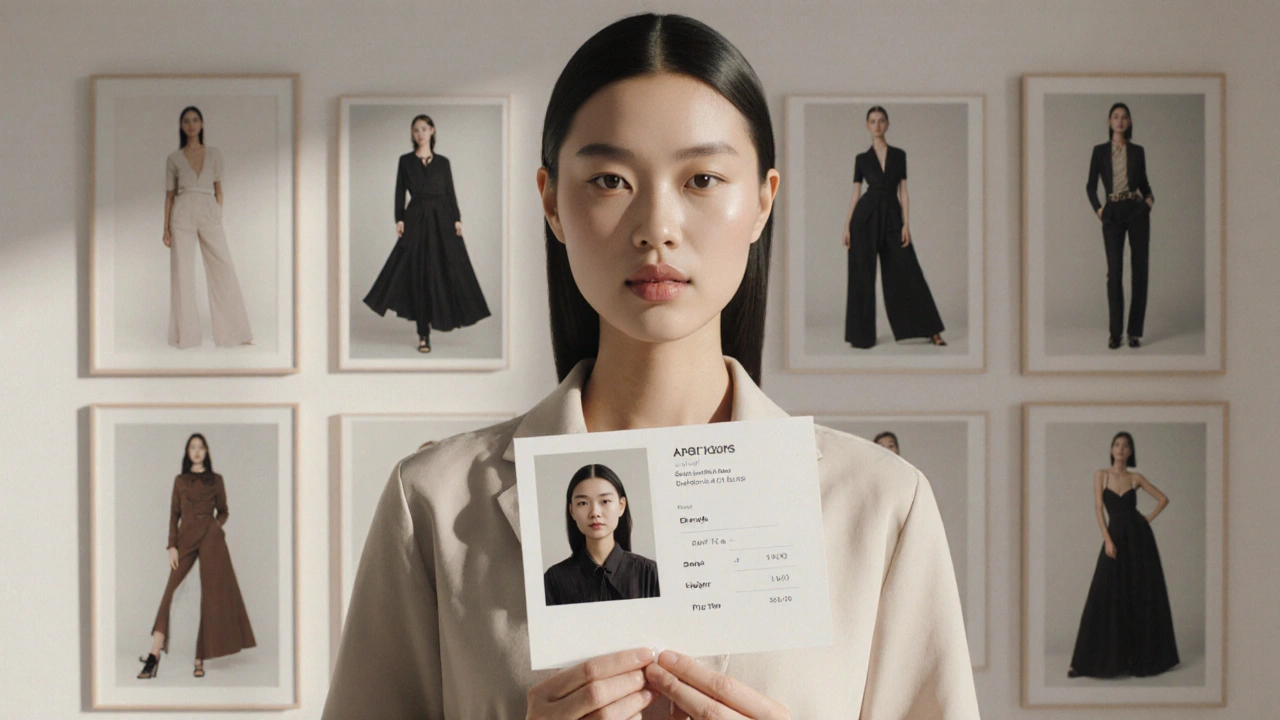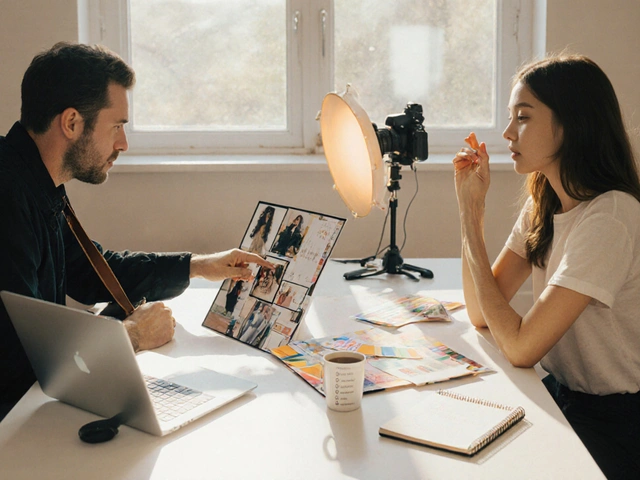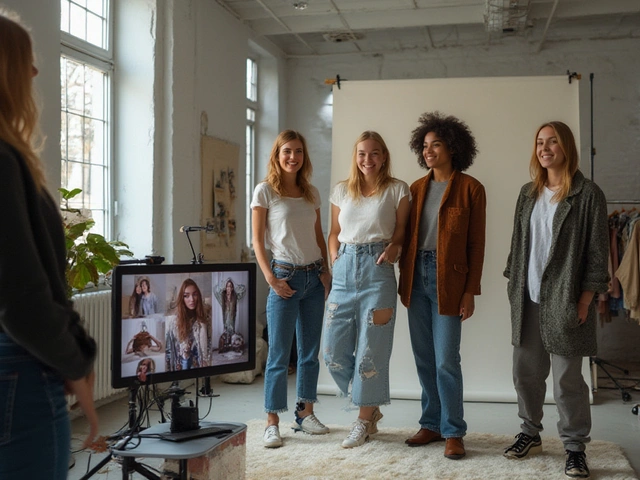Building a model portfolio isn’t just about collecting pictures. It’s about telling a story-your story-with images that show who you are, what you can do, and why someone should hire you. If you’re serious about becoming a model, your portfolio is your resume, your audition tape, and your first impression-all rolled into one. And if it’s weak, inconsistent, or outdated, agencies and clients will move on before they even meet you.
What a Model Portfolio Actually Is
A model portfolio isn’t a scrapbook of selfies or random Instagram posts. It’s a curated collection of professional photos that prove you can perform under different conditions: lighting, poses, outfits, emotions. It shows versatility, professionalism, and marketability. Think of it as a visual CV for the fashion, commercial, or editorial world.
Most agencies expect at least 8-12 high-quality images. Not 50 blurry ones. Not 10 shots of you in the same pose. Just the best, most varied shots that represent your range. You don’t need to be a supermodel to start. You just need to look like someone who can be trusted in front of a camera.
Start With the Right Photos
The foundation of your portfolio is your comp card and headshots. These are non-negotiable. A headshot should be a clean, well-lit, full-face photo-no filters, no heavy makeup, no sunglasses. It should show your natural features clearly. If you’re doing commercial modeling, your headshot needs to look like someone you’d trust to sell toothpaste or cereal. For fashion modeling, it can be more dramatic, but still authentic.
Your comp card (composite card) is a one-page printed or digital layout that includes your headshot, a full-body shot, your stats (height, weight, measurements, shoe size), and contact info. Agencies use this to quickly assess if you fit their client needs. If your comp card doesn’t have your measurements listed, you’re already behind.
Don’t try to do this yourself with your phone and a mirror. Hire a professional photographer who specializes in modeling portfolios. Yes, it costs money-usually £150-£400 in the UK-but it’s the most important investment you’ll make. A bad photo can ruin your chances. A great one opens doors.
Build Variety: Show Your Range
One of the biggest mistakes new models make is having a portfolio that looks like one long photo session. You need different looks. Here’s what to include:
- Headshots - Natural, no makeup, neutral background.
- Full-body shots - Show your posture, proportions, and how you carry yourself.
- Fashion editorial - High-fashion, artistic, moody lighting. Think Vogue or Elle.
- Commercial - Bright, friendly, everyday wear. Think supermarkets, banks, or phone ads.
- Swimwear or lingerie - Only if you’re targeting those markets. Don’t include this unless you’re sure.
- Beauty shots - Close-ups of your face, hair, skin. Shows your ability to sell products.
- Expression shots - Smiling, serious, surprised, focused. Proves you can convey emotion.
Don’t force yourself into styles you don’t feel comfortable with. If you’re naturally more commercial than runway, lean into that. Agencies want models who are consistent and reliable, not ones who try to be everything.
Work With the Right Photographer
Not every photographer who says they do "model portfolios" actually knows what they’re doing. Ask to see their past work-specifically, portfolios they’ve built for other models. Look for clean lighting, natural skin tones, and poses that flatter without being cliché.
Ask them if they’ve worked with agencies before. A photographer who’s familiar with agency expectations will know what shots matter. They’ll understand the difference between a fashion editorial shot and a commercial look. They’ll know how to direct you to show your best angles.
Some photographers offer package deals: headshots + 3 full-body shots + 2 editorial looks for £250. That’s a good starting point. Avoid anyone who offers to shoot you for "exposure". You’re not a free model. You’re investing in your career.
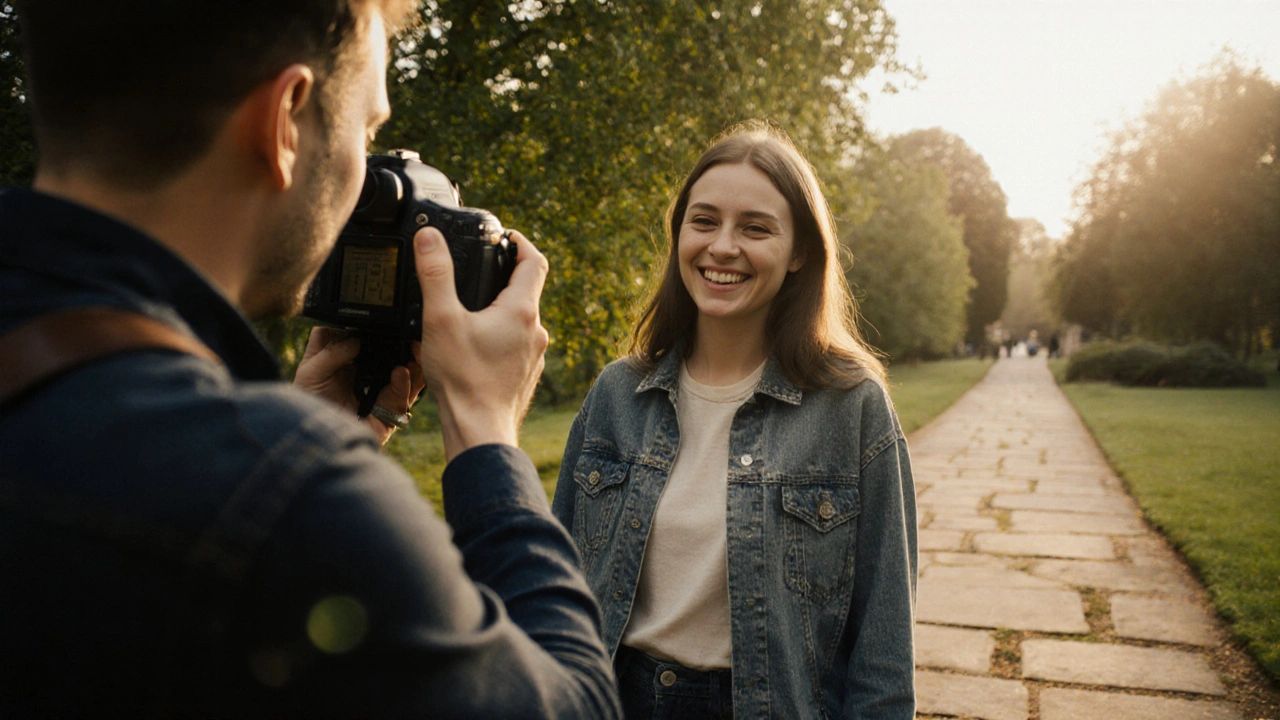
Where to Shoot: Location Matters
Your background should never distract. Simple walls, natural light outdoors, or a studio with neutral backdrops work best. Avoid busy streets, cluttered rooms, or overly dramatic lighting unless you’re going for a specific editorial look.
Many models in the UK shoot in London, Manchester, or Birmingham, but you don’t need to be in a big city. Oxford has great natural light and quiet parks perfect for outdoor shots. A local photographer who knows the area can find hidden gems-like the Covered Market for urban textures or the Botanic Garden for soft, green backgrounds.
Update Regularly
Your portfolio isn’t a one-time project. It’s a living document. If you’ve lost or gained weight, changed your hairstyle, or grown into a new style, update your photos. Agencies will notice if your portfolio looks 18 months old. They want to see someone current.
Every 12-18 months, add 2-3 new images. If you’ve done a paid job, include one or two from that shoot (with permission). If you’ve worked with a new stylist or makeup artist, show that evolution. It proves you’re active and growing.
Keep It Professional
Never include party photos, bikini pics from a beach vacation, or anything that looks like it was taken on a phone. Even if you think it’s "hot," agencies will see it as unprofessional. You’re not building a personal brand-you’re building a business.
Your portfolio should be easy to navigate. If you’re sharing it digitally, use a simple website or PDF. No flashy animations. No pop-ups. Just clean layout, clear images, and your contact info on every page. Include your name, email, phone number, and agency (if you have one). If you don’t have an agency yet, say "Open to representation".
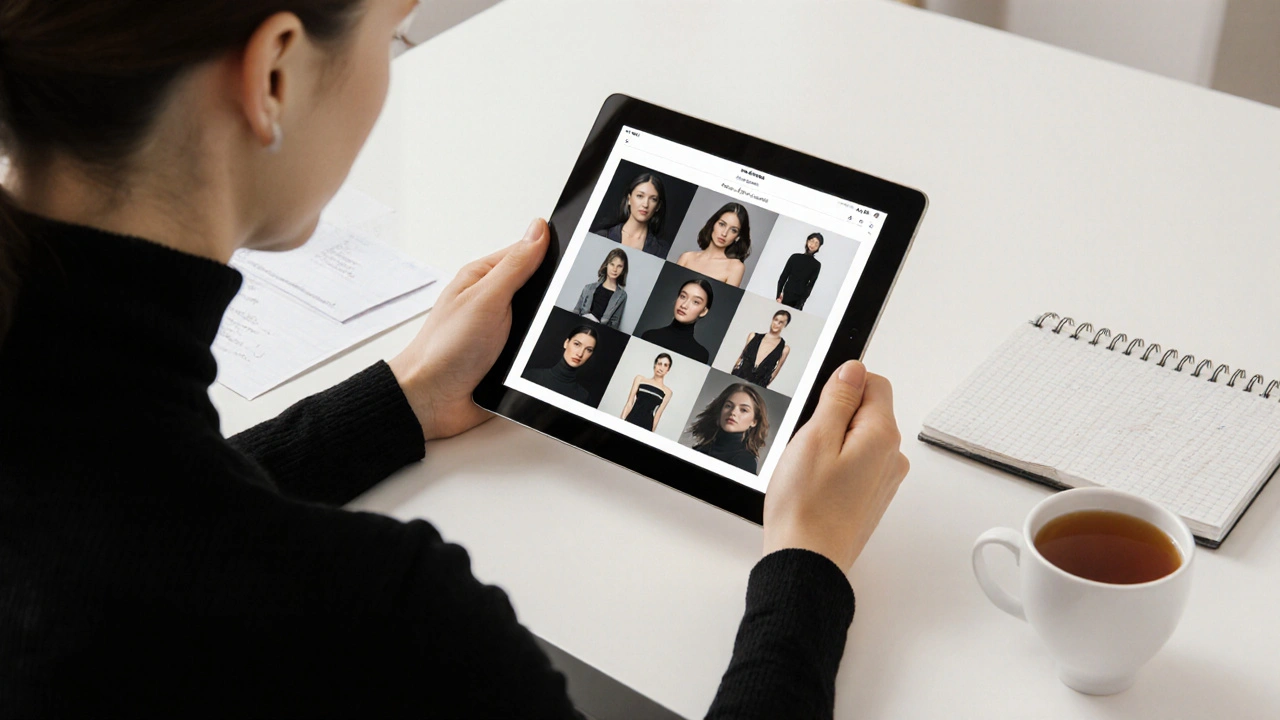
What Agencies Look For
Agencies don’t just look at your face. They look at your walk, your presence, your ability to take direction. But they can’t see that in person until they’ve seen your photos. Your portfolio is their first filter.
Here’s what they’re checking:
- Do your photos look like they were taken by a professional?
- Do you look like you can handle different types of jobs?
- Is your face clear and recognizable?
- Are your measurements listed and accurate?
- Do you look like you’ve been coached or directed?
If your portfolio makes them wonder how you got those shots, they’ll assume you’re inexperienced. If it looks polished and intentional, they’ll assume you’re ready to work.
Common Mistakes to Avoid
Here’s what kills portfolios before they even get seen:
- Using filters or heavy editing. Natural skin is key.
- Too many shots. Less is more. Pick your top 10.
- Not listing measurements. This is a dealbreaker for most agencies.
- Using photos with other people in them. You should be the only focus.
- Including photos from a friend’s wedding or prom. It looks amateur.
- Having a website that doesn’t load on mobile. Most agencies view portfolios on phones.
Next Steps: What to Do After Your Portfolio Is Ready
Once your portfolio is polished, start sending it out. Don’t wait for someone to find you. Target agencies that represent models similar to you. Look at who’s on their website. Are they commercial? Fashion? Plus-size? Match yourself to them.
Send your portfolio as a PDF (under 5MB) to the agency’s submissions email. Include a short, polite note: "Hi, I’m [Name], [age], [height], [measurements]. I’ve attached my portfolio and would appreciate consideration for representation."
Apply to open calls. Many agencies hold monthly or quarterly open casting days. Go in person if you can. Bring printed copies of your portfolio. Dress simply-no logos, no makeup. Let them see you as you are.
And remember: rejection isn’t personal. It’s about fit. One agency might say no because you’re too tall. Another might say no because you don’t fit their commercial look. Keep going. The right agency is out there.
Final Thought: Your Portfolio Is Your First Job
Building a model portfolio isn’t the end goal-it’s the first step. It’s the work you do before you even get paid. But it’s also the most important work you’ll ever do. Every image you choose says something about your professionalism, your discipline, and your understanding of the industry.
Don’t rush it. Don’t cut corners. Don’t let a friend with a DSLR take your photos just because they "know someone." This is your career. Treat it like one.
Do I need to be tall to become a model?
No, not anymore. While runway models traditionally need to be 5’9” or taller, the industry has expanded. Commercial modeling, plus-size modeling, and lifestyle modeling all have different standards. Many brands now want relatable faces-not just tall, skinny figures. Focus on your strengths, not a number.
Can I build a portfolio without an agency?
Yes, absolutely. Most models start without an agency. In fact, agencies often ask to see your portfolio before they’ll consider you. You can build it by hiring a photographer, doing test shoots with stylists, or even collaborating with student photographers. Just make sure the final images are professional and clean.
How many photos should I include in my portfolio?
Aim for 8-12 high-quality images. More than that can overwhelm. Less than 6 makes you look inexperienced. Choose variety over quantity. One strong fashion shot, one commercial look, one beauty close-up, and a few full-body poses give agencies a full picture of your range.
Should I include swimwear in my portfolio?
Only if you’re specifically targeting swimwear, lingerie, or fitness modeling. If you’re aiming for commercial or editorial work, leave it out. Many agencies assume you’re open to all types if you include swimwear, and that might not be your goal. Be intentional.
How much should I spend on my portfolio?
Budget between £150 and £400 for your first portfolio. This covers a professional photographer, basic styling, and 10-15 edited images. Don’t go over £600 unless you’re doing a full editorial shoot. Avoid packages that promise 50+ photos-that’s usually a sign of low quality.
Can I use my Instagram as my portfolio?
No. Instagram is great for exposure, but not for submissions. Agencies need clean, organized, professional files with your stats and contact info. A scrollable feed doesn’t work for them. Use Instagram to drive attention, but always have a separate, downloadable portfolio ready to send.
